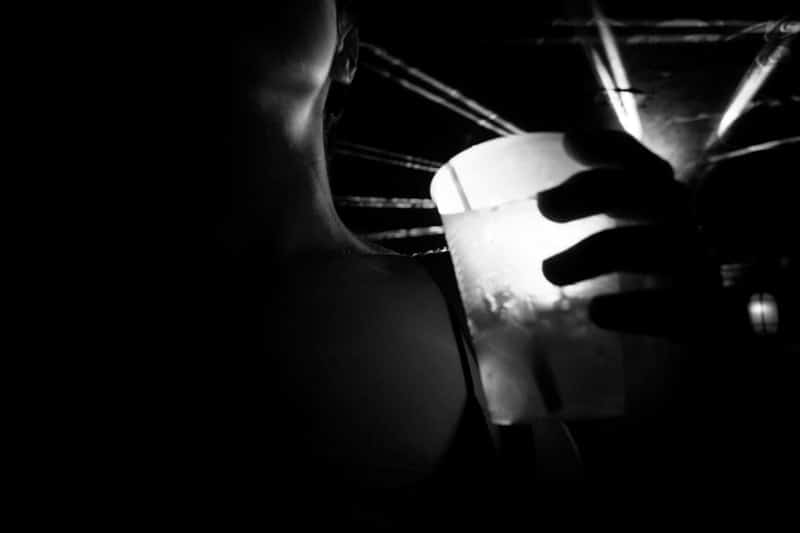Vodka
- Introduction
- Types/Brands
- Vodka Etiquette
- How to Drink
- Food Pairing
- Vodka Cocktails
- GUEST COLUMN

Introduction
There is a small section of historians who strongly support the theory that it was vodka that was in great measure responsible for the `bloody’ end of the Czarist regime in Russia! The Reds, it appears, made up for lost drinking time imposed by the imperial ban of 1914 (as a war-time measure), fuelling the already existing mayhem. Crazy idea, what? Not quite. Attempts to re-impose the ban on vodka after the revolution in 1917 failed miserably with Lenin resignedly saying, “Drunkenness is better than slavery!”
Vodka is a clear, distilled spirit thought to have its origins in Russia, although it has been made in countries such as Poland, Lithuania, Ukraine and Finland as well since as long as anyone can remember. The base is usually grain (wheat, barley, rye, corn), potato or sugarbeet molasses. In Scandinavia, flavourings like caraway are added to the distillate, resulting in ‘Aquavit’; in Denmark, Germany and parts of Central Europe, a fruit-based distilled spirit called ‘Schnapps’ is popular.
The word literally translates from “Voda” which stands for “Water of life”. Vodka itself translated means “My Little / My Precious Water”
Types
Commercially, low- to mid-grade vodka is popular the world over as a base for cocktails and mixed drinks because of its neutral flavour. High-quality vodka is colourless, odourless and best sipped neat and ice-cold from small shot glasses, accompanied by good caviar or other strong, fishy or salted stuff.
Flavoured and coloured vodkas are popular nowadays. Lime, orange, spices, pepper, flowers, berries, chocolate, coffee and even ginseng have been used to flavour vodka. The first commercially made flavoured vodka was ABSOLUT Peppar which was introduced in 1986. Black vodka – coloured with catechu – makes for added visual interest (although no additional flavour), while the increasingly popular pink vodkas often have a floral taste. In all its variations and gradations, vodka is today’s spirit of choice for professional bartenders and home bar enthusiasts alike.
Although most vodka around the world is made from rye, some are also made from potatoes and still others from molasses. As you would no doubt assume, the quality and type of the raw material has an important hand to play in what your vodka tastes like. In both Russia and Poland, the birthplaces of vodka, rye is mainly used in the production of vodka. Wheat is the other major competitor to rye, with it being the more traditional ingredient in the western world. Other parts of Eastern Europe use potatoes, while still other parts of the world use molasses. Apart from the main raw material, the other major constituent of your bottle of Vodka is water. Over 60% of your bottle is composed of water, so it’s purity is of utmost importance to the taste of your vodka. Quite an elaborate purification process is undertaken, the details of which we shall not slog through here, for reasons of keeping this simple.
Major Brands: Smirnoff / Absolut / Stolichnaya / Svedka / Grey Goose / Ciroc / Belvedere / Ketel One / Skyy / Magic Moments / Crystal Head / 42 Below / Finlandia / Puschkin
Vodka Etiquette
- Glasses. You can drink your vodka out of a soup bowl, an espresso cup, or the dried skull of a Siberian wolf. We prefer a thick, clear glass, hand-washed.
- Ambience. Vodka drinkers are the world’s least spoiled lot. While decorum is important, decor is not (frankly, after a few rounds, you won’t really care). In general, though, the more intimate the ambience, the better. Vodka needs no flowery speeches, no thespianic abilities – just a quick toast and a clinking of glasses. Make sure that all the accoutrements – beer, food, TV remotes, encyclopedias, prophylactics (you never know) and sports reference books (you’ll be arguing important issues) – are close at hand.
- Temperature. The colder the better. Chill the bottle and the glasses in the freezer until they’re ice-cold, but never, never drink good vodka on the rocks. And never ever drink it warm. That’s just wrong.
- Toasts. Anything mildly abusive or raunchy will do.
- Accompaniments or ‘chasers’. Chasers differ from mixers in that they’re a strict division of tastes. A chaser, whether liquid (beer) or solid (artichoke hearts), is essentially an escort, a Beast to the Beauty. You can take the high road: caviar, smoked salmon, veal Apraksin. Or you can take the low road: I’ve known people drinking vodka with Usal Pao from a stall near the Jogeshwari flyover.
- Drinking. Your glass is full; the table’s set. Endure the toast the way you would the last session of a weeklong sales conference. Clink glasses with as many people as you can without spilling. Assume the expression of a Tolstoy character pondering life and death, honour, or a book contract. Inhale deeply, hold your breath, throw back your head and throw in the spirit. Now that you’ve exhaled and are happily munching the pakoras – wasn’t it good? Go on, pour the next round.
How to Drink
- Neat, as a chilled shot
- On the rocks with a twist of lime
- With tonic and lime
- With soda and lime
- Mixed with soft drinks or juices; popular in cocktails
- Traditionally accompanied by good caviar, if you can get your hands on some.
- A range of cocktails. Click here for a comprehensive list of vodka cocktail recipes.
Food Pairing
- Vodka being the most neutral of most spirits can be paired successfully with a whole lot of different foods.
- The classic way of course, as the Russians would normally have it, is with Caviar and a chilled shot of the spirit.
- Vodka, if being served neat, as an accompaniment to food must be optimally chilled before being served.
- It can be served with a variety of appetizers, cold soups, pastas, fish dishes and main courses. But it would really help if the food is not too highly flavoured.
- Dishes containing a very fiery sauce or too much of herbs or garlic might not be the best choice to be paired with a choice of vodka.
- Here you could experiment with pairing different flavoured vodkas with different types of food.
- Also Vodka cocktails are good for pairing – say, for example, classical hors d’oeuvres could be served with a classic dry martini. Or you could try a variety of cured meats / cold meats with the same.




